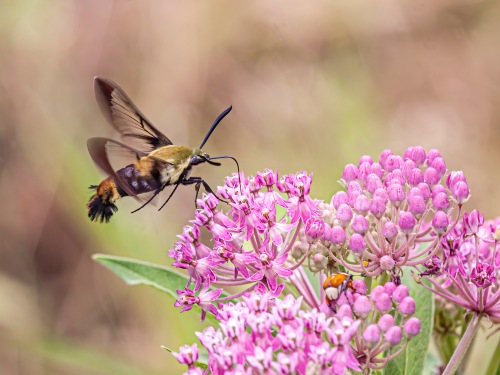Posted in Butterflies, Insects, Macro Photography, Nature, Photography, Summer, wildlife, tagged Canon 50D, clearwing moth, Hemaris diffinis, Lorton VA, Occoquan Regional Park, Snowberry Clearwing Moth, swamp milkweed, Tamron 180mm on August 10, 2020|
17 Comments »
Having recently photographic some hummingbirds in flight, I couldn’t help but think of them when I first spotted several Snowberry Clearwing Moths (Hemaris diffinis) last week at Occoquan Regional Park. The fight characteristics are quite similar as they hover in mid-air and extract nectar from flowers. Unlike hummingbirds that have a skinny bill and a tongue, clearwing moths use a long proboscis to reach into the flowers.
In our area we have two similar species of clearwing moths, the Snowberry Clearwing and the Hummingbird Clearwing (Hemaris thysbe). They are similar in appearance and behavior, but generally the Hummingbird Clearwing Moth is redder in appearance, so I believe these are all Snowberrys.
The clearwing moths seem to be very attracted to several small patches of swamp milkweed. Other insects had a similar attraction and if you look in the center of the milkweed in the second photo, you will note an orange insect that I can’t see well enough to identify.



© Michael Q. Powell. All rights reserved.
Read Full Post »












